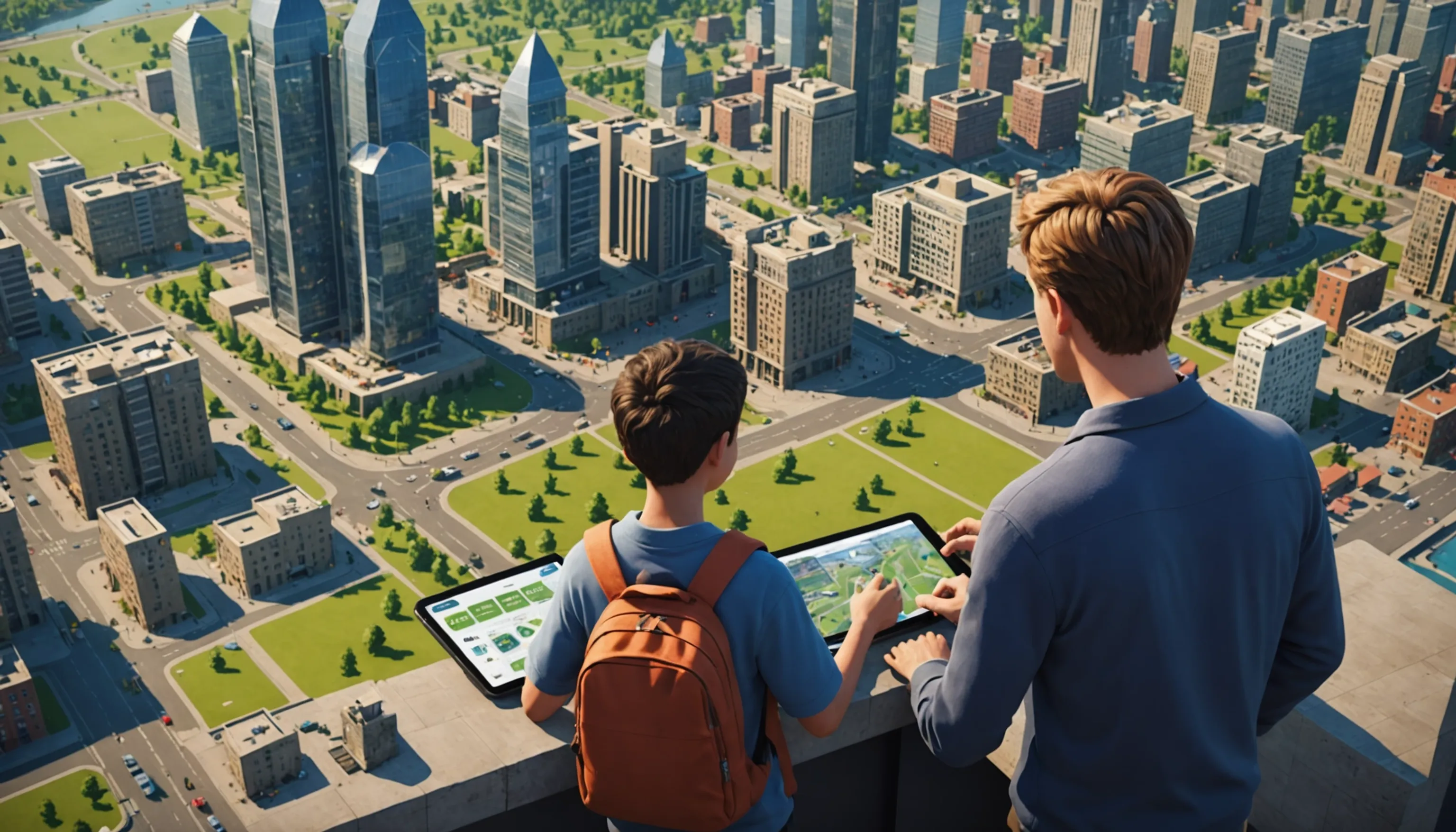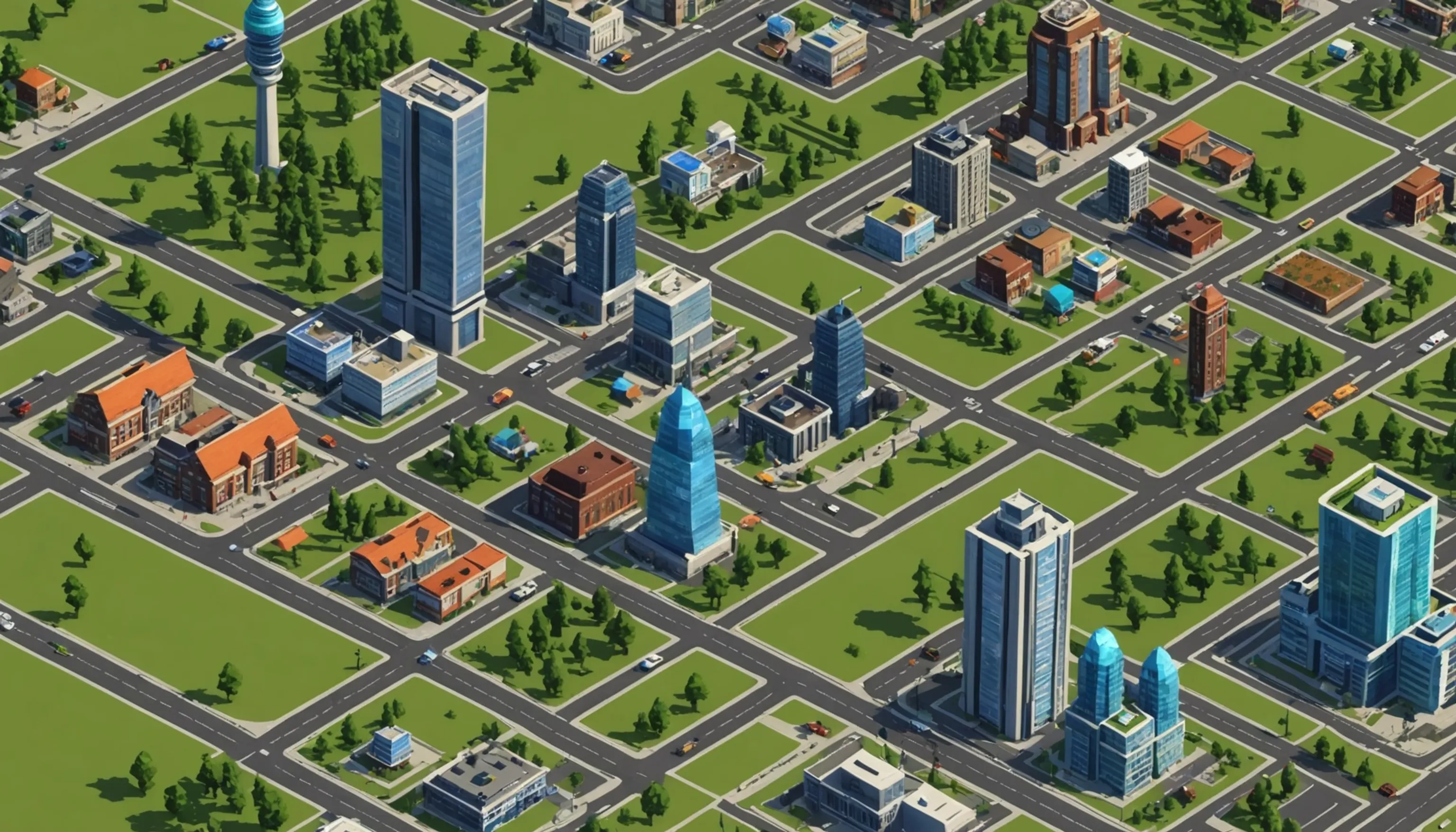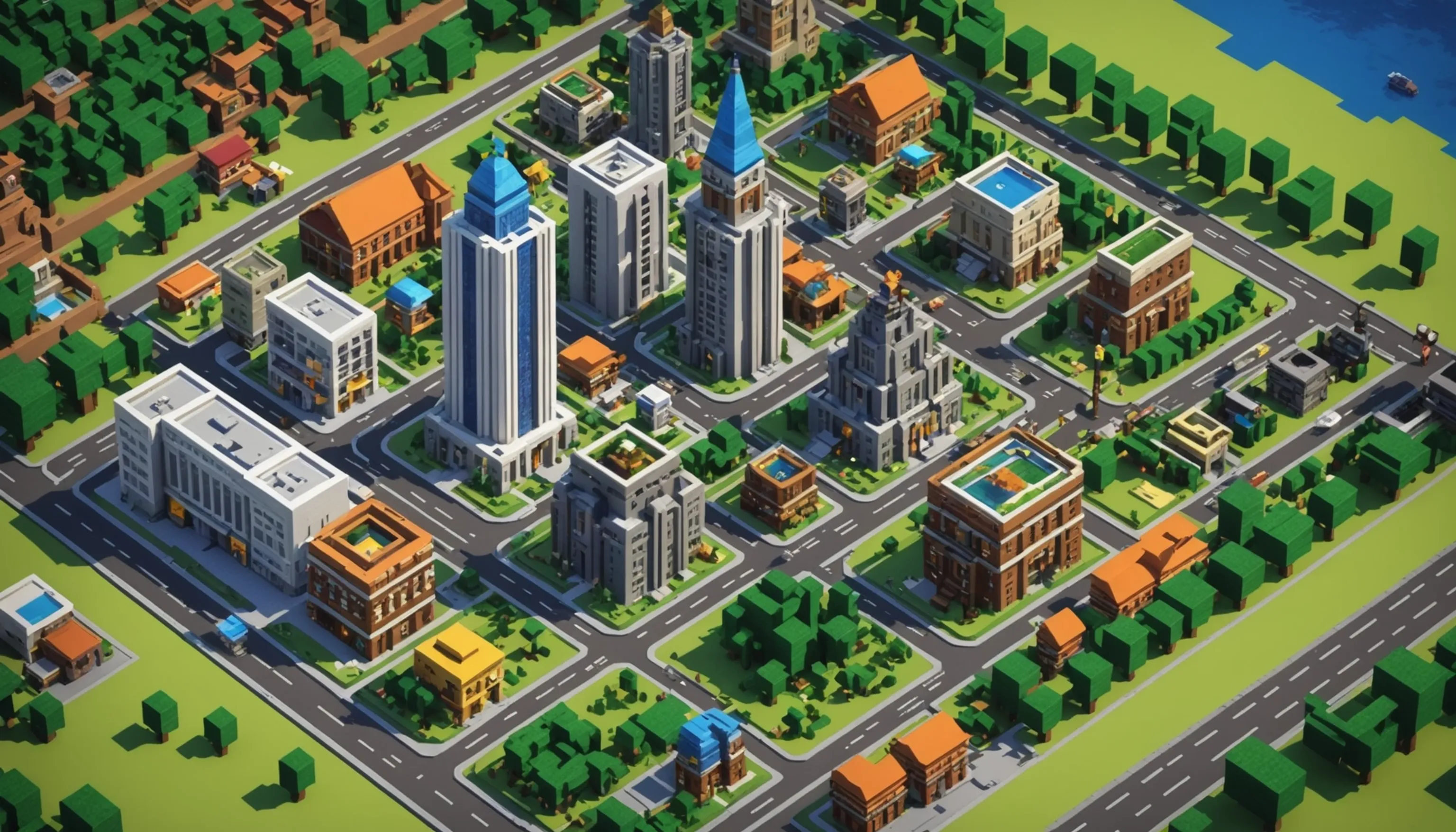Understanding City Builders for Teens
 HvWHenry van Wagenberg
HvWHenry van Wagenberg
Understanding City Builders: A Guide for Parents and Teachers
City builder games are a genre that allows players to design and manage their own cities, balancing resources, infrastructure, and the needs of their inhabitants. These games provide a unique opportunity for teenagers to engage in creative problem-solving while learning about urban planning and resource management. As parents and teachers, understanding city builders can help you guide teens in making informed choices about their gaming experiences. By encouraging them to explore these games, you can foster skills such as critical thinking, strategic planning, and collaboration, making gameplay both enjoyable and educational.
What is a City Builder Game?
A City Builder Game is a type of simulation game where players are tasked with constructing and managing their own cities. These games typically involve planning out urban layouts, managing resources, and ensuring the happiness of the citizens. Players often start with a blank canvas, such as a plot of land, and gradually develop it into a bustling metropolis by placing buildings, roads, parks, and other essential structures.
City builder games can vary widely in complexity and style. Some games are more focused on realistic urban planning, requiring players to consider factors like traffic flow, zoning laws, and public services. Others may incorporate whimsical elements, allowing for creative freedom in design without strict adherence to reality.
In addition to construction, players must also deal with challenges such as natural disasters, economic fluctuations, and the demands of their virtual population. This dynamic gameplay encourages players to think critically and adapt their strategies based on changing conditions.
Popular examples of city builder games include the SimCity series and Cities: Skylines, both of which offer deep mechanics and engaging gameplay. These games not only entertain but also serve as an educational tool, teaching players about resource management and the complexities of running a city.
As parents and teachers, recognizing the educational value of city builder games can help you support teenagers in developing important skills while enjoying their gaming experience.
Benefits of City Builder Games for Teenagers
City builder games offer a multitude of benefits for teenagers, making them not only a source of entertainment but also a valuable educational tool. One of the primary advantages is the development of critical thinking skills. Players are often required to analyze situations, make strategic decisions, and adapt to changing circumstances, which fosters a problem-solving mindset.
Another significant benefit is the enhancement of creativity. City builder games encourage players to design their own cities, allowing for personal expression and innovation. As they create unique layouts and structures, teenagers learn to think outside the box and explore different architectural styles.
Moreover, these games promote resource management skills. Players must balance budgets, manage supplies, and allocate resources effectively to keep their cities thriving. This teaches valuable lessons about economics and the importance of sustainability.
Additionally, city builder games often involve elements of collaboration, especially in multiplayer settings. Teens can work together to build cities, sharing ideas and strategies, which fosters teamwork and communication skills. This social aspect can lead to meaningful interactions and friendships.
Finally, these games can spark an interest in real-world concepts such as urban planning and environmental sustainability. By engaging with the game mechanics, teenagers can gain insights into how cities function, the challenges they face, and the importance of planning for the future.
Overall, city builder games provide a rich platform for learning and personal growth while keeping teenagers engaged and entertained.

Popular City Builder Games to Consider
When exploring city builder games, several popular titles stand out for their engaging gameplay and educational value. The SimCity series offers a classic experience where players manage resources and design intricate cities. Cities: Skylines is known for its advanced mechanics, allowing for detailed urban planning and management. Another noteworthy option is Minecraft, which, while primarily a sandbox game, includes city-building elements that encourage creativity and collaboration among players. Each of these games provides unique challenges and opportunities for teenagers to develop skills while enjoying immersive gameplay.
SimCity Series
The SimCity series is one of the most iconic names in the world of city builder games. First launched in 1989, it has evolved through various iterations, each offering unique features and gameplay mechanics. Players take on the role of a mayor, tasked with designing and managing a city from the ground up. This includes zoning land for residential, commercial, and industrial use, managing public services like schools and hospitals, and addressing challenges such as traffic congestion and natural disasters.
One of the key aspects of the SimCity series is its emphasis on resource management. Players must balance budgets, collect taxes, and plan for future growth. This not only teaches financial responsibility but also the importance of strategic planning. As cities expand, players face complex challenges, requiring them to think critically and adapt their strategies.
The series is known for its depth and realism. In SimCity, players must consider the needs of their citizens, such as public transportation, safety, and environmental impact. This creates a more immersive experience, as players see the direct consequences of their decisions on the city's population.
Additionally, the SimCity series encourages creativity, allowing players to design their cities according to their vision. With a range of building styles and customization options, each city can be unique. Overall, the SimCity series remains a valuable tool for teaching teenagers about urban planning, economics, and the complexities of city management while providing hours of engaging gameplay.
Cities: Skylines
Cities: Skylines has emerged as a leading city builder game since its release in 2015, praised for its depth and realism. Unlike earlier city simulation games, Cities: Skylines offers a more complex and flexible approach to urban planning, allowing players to create sprawling cities with intricate infrastructure and detailed management systems.
In Cities: Skylines, players start with a small plot of land and gradually expand their city by zoning areas for residential, commercial, and industrial development. The game stands out for its emphasis on traffic management and public transportation, requiring players to devise efficient systems that keep their citizens moving smoothly. This aspect of the game not only enhances gameplay but also teaches players the importance of urban mobility in real-world city planning.
Another remarkable feature is the ability to mod the game, allowing players to customize their experience with new buildings, mechanics, and gameplay elements. This encourages creativity and innovation, as players can implement their unique ideas into their cities.
Additionally, Cities: Skylines incorporates environmental challenges, such as pollution and natural disasters, requiring players to consider sustainability in their city designs. This aspect of the game fosters awareness of real-world issues, encouraging teenagers to think critically about urban development and its impact on the environment.
Overall, Cities: Skylines offers a rich and engaging experience, making it an excellent choice for teenagers interested in city-building and management, all while providing educational insights into urban planning and sustainability.

Minecraft as a City Builder
Minecraft, while primarily known as a sandbox game, has gained significant recognition as a versatile city builder. With its block-based building mechanics, players can construct intricate cities, towns, and even entire landscapes limited only by their imagination. This flexibility allows teenagers to engage in creative expression while honing valuable skills.
In Minecraft, players can start with a simple plot of land and gradually develop their creations, designing everything from residential homes to grand skyscrapers and public spaces. The game's survival mode adds an extra layer of challenge, as players must gather resources and manage their health while building. This aspect encourages strategic planning and resource management, mirroring real-world city-building challenges.
Furthermore, Minecraft fosters collaboration and social interaction. In multiplayer mode, players can work together to design and build cities, promoting teamwork and communication skills. This collaborative environment allows for the sharing of ideas and strategies, making city building a fun and engaging group activity.
The game also incorporates educational elements through its Redstone mechanics, which enable players to create complex systems like traffic lights, automated doors, and even simple machines. This introduces basic engineering and programming concepts in a playful manner.
Additionally, Minecraft's creative mode removes survival constraints, giving players unlimited resources to design their dream cities without limitations. This mode is particularly popular among those who want to explore architectural styles and experiment with urban planning concepts.
Overall, Minecraft serves as an excellent platform for teenagers to develop their creativity, problem-solving skills, and understanding of city-building principles.
Tips for Encouraging Positive Gameplay
To encourage positive gameplay in city builder games, consider implementing the following tips:
- Set Time Limits: Establish clear boundaries for gaming sessions to prevent excessive screen time and promote a healthy balance with other activities.
- Discuss Strategies: Engage in conversations about in-game strategies and decisions. This promotes critical thinking and allows for shared learning experiences.
- Encourage Creativity: Allow teenagers to experiment with their city designs. Celebrate their unique creations and encourage them to explore different architectural styles.
- Focus on Problem-Solving: When challenges arise in the game, guide them to brainstorm solutions rather than providing direct answers. This enhances their critical thinking skills.
- Explore Real-World Concepts: Connect game mechanics to real-world urban planning and environmental issues, fostering a deeper understanding of how cities function.
By following these tips, you can help teenagers enjoy their gaming experience while developing valuable skills.
Setting Limits on Screen Time
Setting limits on screen time is essential for promoting a healthy balance between gaming and other activities, especially when it comes to engaging with city builder games. Here are some effective strategies for parents and teachers to consider.
Firstly, establish a clear schedule for gaming sessions. Determine specific times during the week when teenagers can play their favorite city builder games, ensuring that these sessions do not interfere with essential responsibilities like homework, chores, or family time. Communicating these expectations helps teenagers understand the importance of moderation.
Utilize apps or built-in device features that track and limit screen time. These tools can provide valuable insights into how much time is spent gaming, making it easier to enforce limits without constant supervision.
Encourage alternative activities to fill the time outside of gaming. Suggest hobbies like reading, sports, or creative projects that can complement the skills gained from city builders. This not only diversifies their interests but also prevents reliance on screens for entertainment.
Additionally, engage in discussions about the effects of excessive screen time on physical and mental health. Help teenagers recognize the signs of fatigue or overstimulation and encourage them to take regular breaks during gaming sessions.
Finally, model healthy screen habits yourself. By demonstrating a balanced approach to technology use, you set a positive example for teenagers to follow, fostering a culture of moderation in gaming.
Discussing Game Strategies Together
Discussing game strategies together is a fantastic way to enhance the gaming experience for teenagers engaged in city builder games. This collaborative approach not only fosters critical thinking and problem-solving skills but also strengthens the bond between parents and teens. Here are some effective ways to facilitate these discussions.
Start by setting aside dedicated time to play together. This allows you to observe how your teenager approaches the game, providing a natural opportunity to engage in conversation. As you play, ask open-ended questions about their strategies, such as, "What factors are you considering when zoning your city?" or "How do you plan to manage traffic flow?" These questions encourage deeper thinking and reflection.
Encourage them to explain their decision-making process. This not only reinforces their understanding of the game mechanics but also helps them articulate their thoughts. You can also share your own ideas or strategies, creating a two-way dialogue where both of you learn from each other.
Consider exploring online resources, forums, or video tutorials together. These platforms often provide valuable insights and innovative strategies that can elevate gameplay. Discussing these findings can spark new ideas and encourage experimentation with different approaches.
Lastly, celebrate their achievements and creativity in the game. Recognizing their hard work and unique designs fosters a positive gaming environment and encourages continued engagement. By discussing game strategies together, you promote not only skill development but also a shared passion for gaming.
Exploring Real-World City Planning Concepts
Exploring real-world city planning concepts through city builder games can provide teenagers with valuable insights into the complexities of urban development. By connecting gameplay to real-life principles, parents and teachers can enhance the educational value of these games while fostering an interest in civic engagement.
Start by discussing the fundamental elements of city planning, such as zoning, infrastructure, and public services. Explain how cities are organized into residential, commercial, and industrial zones, and why this organization is crucial for functionality. Encourage teenagers to think about how they would apply these concepts in their own city designs within the game.
As they play, prompt discussions about the impact of decisions on various aspects of city life. For instance, how does traffic flow affect the daily lives of citizens? What role do parks and recreational areas play in community well-being? By asking such questions, you help them understand the interconnectedness of city planning decisions and their effects on residents.
Incorporate real-world examples by researching famous cities and their planning strategies. Discuss the unique challenges faced by cities like New York, Tokyo, or Amsterdam and how they address issues such as public transportation, housing, and environmental sustainability. Compare these strategies to their in-game experiences, encouraging them to think critically about what works and what doesn’t.
Finally, consider involving them in local community planning discussions or events. Engaging with city planners or attending town hall meetings can provide firsthand experience and inspire a deeper understanding of civic involvement.
